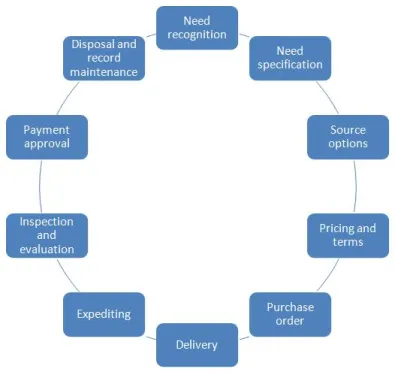Electronic vs. Traditional Purchase Orders: Why Go Digital?
- donnariekepro
- Aug 2, 2024
- 3 min read
In today’s fast-paced business environment, efficiency and accuracy are paramount. The choice between electronic and traditional purchase orders (POs) is a critical decision for many organizations. This blog explores the key differences between electronic and traditional purchase orders and why shifting to a digital system can provide significant advantages.
Understanding Purchase Orders
Traditional Purchase Orders
Traditional purchase orders are paper-based documents used to request goods or services from suppliers. These documents are manually filled out, often requiring physical signatures and postal delivery. While this method has been standard practice for many years, it comes with several challenges:
Manual Processing: Traditional POs require manual entry and handling, increasing the likelihood of errors and delays.
Storage and Retrieval: Physical documents need to be stored and retrieved, which can be cumbersome and space-consuming.
Slow Communication: Sending POs via mail or fax can delay the procurement process, impacting timely delivery and increasing administrative overhead.
Electronic Purchase Orders
Electronic purchase orders, on the other hand, are digital documents that streamline the procurement process. These are created, sent, and tracked electronically using specialized software or systems. The benefits of electronic POs are substantial:
Enhanced Efficiency: Electronic POs eliminate manual data entry, reducing errors and speeding up the approval process. Automated workflows can ensure that POs are reviewed, approved, and processed promptly.
Real-Time Tracking: Digital systems provide real-time tracking and visibility into the status of each purchase order. This transparency helps organizations monitor progress, manage inventory, and ensure timely delivery.
Cost Savings: By reducing the need for paper, printing, and postage, electronic POs can significantly lower administrative costs. Additionally, automated processes minimize the need for manual intervention, freeing up resources for other tasks.
Improved Accuracy: Electronic systems often include built-in validation checks to ensure that all required fields are completed and that data is consistent. This reduces the risk of errors compared to manual processing.
Easy Storage and Retrieval: Digital documents are stored electronically, making them easily accessible and searchable. This eliminates the need for physical storage space and simplifies record-keeping and compliance.
Key Reasons to Go Digital
1. Speed and Efficiency
One of the most compelling reasons to switch to electronic purchase orders is the speed and efficiency it offers. Traditional methods can be slow, with delays in processing and communication. Electronic POs accelerate the procurement process, allowing for faster order fulfillment and improved supplier relationships.
2. Cost Reduction
Traditional purchase order processes involve various costs, including paper, printing, and shipping. By moving to electronic POs, organizations can reduce these expenses and invest in more strategic areas. Additionally, the reduced administrative burden can lead to further cost savings.
3. Enhanced Accuracy
Errors in traditional purchase orders can occur at multiple stages, from data entry to physical document handling. Electronic POs minimize these risks by automating data entry and providing real-time validation, leading to greater accuracy and fewer discrepancies.
4. Better Tracking and Reporting
Electronic systems offer robust tracking and reporting capabilities. Organizations can easily monitor the status of purchase orders, analyze procurement data, and generate reports for better decision-making. This level of insight is challenging to achieve with paper-based systems.
5. Environmental Impact
Switching to electronic purchase orders contributes to environmental sustainability by reducing paper usage and waste. As organizations seek to improve their environmental footprint, going digital aligns with broader sustainability goals.
Conclusion
The shift from traditional to electronic purchase orders offers numerous advantages, including increased efficiency, cost savings, improved accuracy, and better tracking. While traditional methods have served their purpose, the benefits of digital systems make a compelling case for organizations to embrace electronic purchase orders. By adopting a digital approach, businesses can enhance their procurement processes, streamline operations, and stay competitive in an increasingly digital world. SITES WE SUPPORT
SOCIAL LINKS




Comments